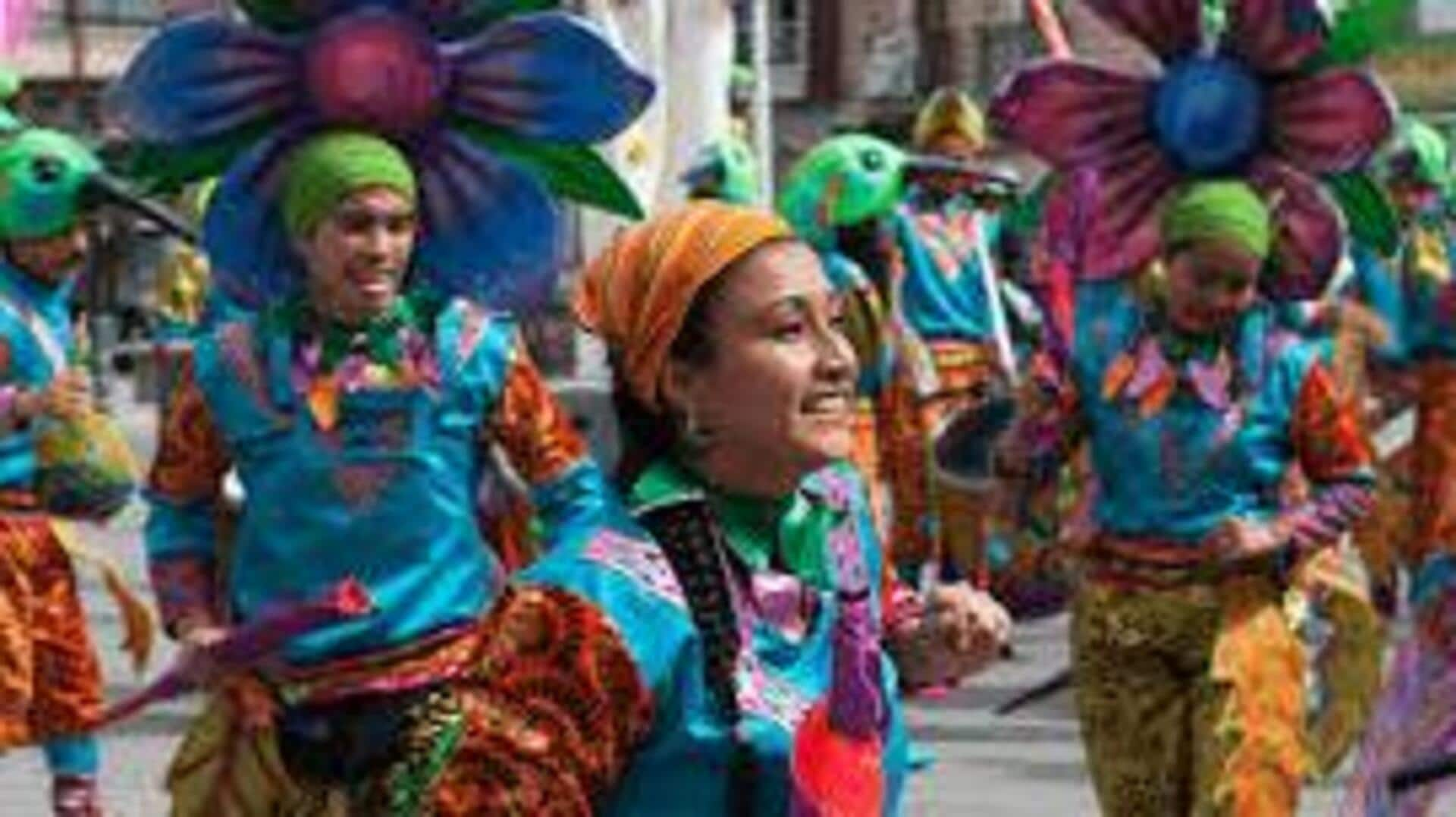
Colombia's carnival of colors: Five whimsical traditions
What's the story
Colombia's Carnival of Colors is a kaleidoscopic explosion of joy, showcasing the nation's vibrant cultural heartbeat and infectious zest for life. Held every year throughout Colombia, this unique festival paints the town (and everyone in it!) in a rainbow of tradition and pure fun. Stunning costumes, pulsating rhythms, and electrifying dance moves bring Colombia's rich tapestry of cultures to life like nothing else.
Floral parade
The Battle of Flowers
The Battle of Flowers is the first event of Barranquilla's Carnival, Colombia's biggest party. This tradition is a grand parade of floats decorated with beautiful flowers. People dress in colorful costumes and dance to the rhythm of cumbia, vallenato, and reggaeton. This parade kicks off four days of non-stop celebration and pays tribute to Colombia's history and folklore.
Cultural harmony
Day of Blacks and Whites
In the southern city of Pasto, January 5 is observed as the Day of Blacks and January 6 as the Day of Whites. This tradition sees people paint their faces black on the first day and white on the second day to promote equality and racial harmony. While its roots go back to the colonial era, this modern interpretation celebrates diversity through artistic expression.
Fiery performance
Devils dance in Riosucio
Colombian town of Riosucio holds its Carnival del Diablo (Carnival of the Devil) every two years, and the star attraction is the Devils Dance. Dressed in devil-inspired costumes with masks and capes, they perform dances believed to banish evil spirits for the next two years. This tradition originated from the blending of indigenous rituals with Christian beliefs during the colonial period.
Blooms galore
Flower Fair in Medellin
Medellin blooms into a vibrant floral wonderland during its annual Flower Fair (Feria de las Flores) in August. One of the most iconic traditions is the Desfile de Silleteros (Silleteros Parade), where participants carry "silletas," large wooden structures covered in elaborate flower arrangements, on their backs through the streets of the city. This tradition pays tribute to Medellin's silleteros history while displaying stunning designs crafted from locally grown flowers.
Coffee culture celebration
Yipao Parade in Quindio
The Yipao Parade in Quindio features vintage Jeeps, locally called Yipaos, piled high with coffee beans or other harvested goods. These Jeeps, crucial to Colombia's coffee region after World War II because of their ruggedness, now serve as a testament to the perseverance and resourcefulness of local farmers. This unique event transforms workhorses into symbols of festivity, showcasing the region's agricultural heritage with a touch of whimsy.